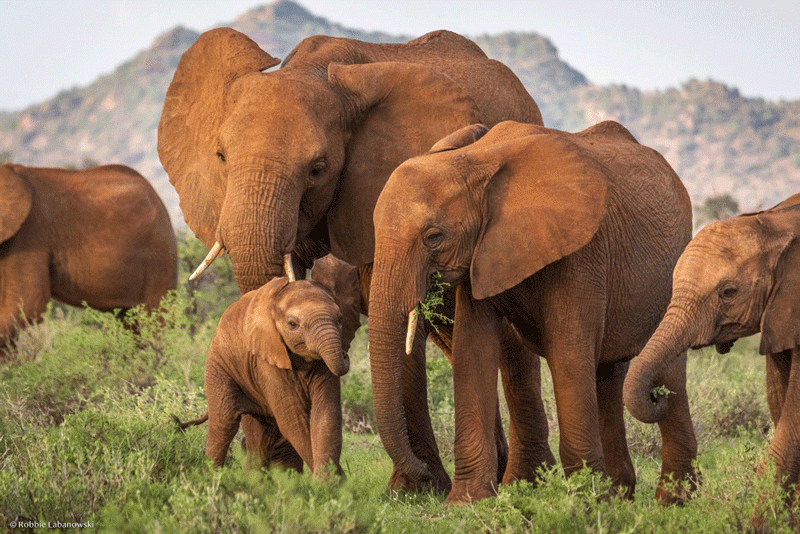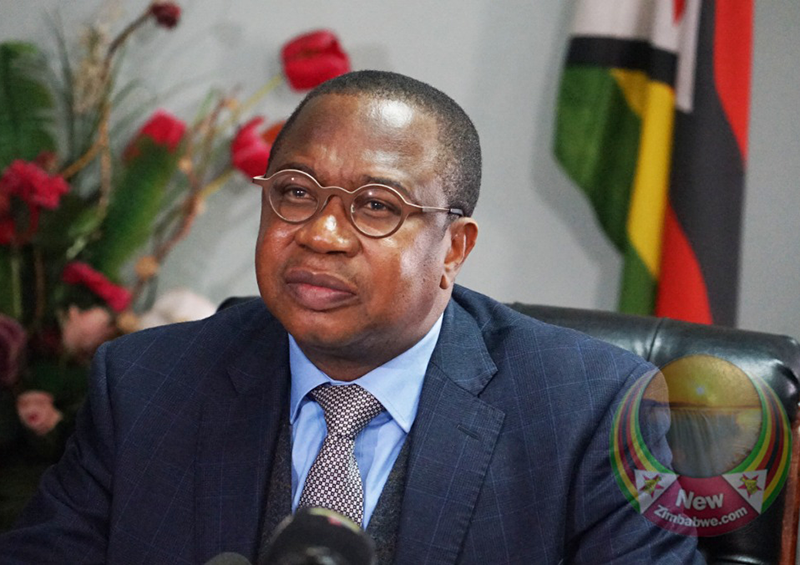
THE year 2023 closed on a grim note for Zimbabwean wildlife conservation amid revelations that at least 160 elephants and countless other species died due to a drought-induced water shortage in the Hwange National Park.
Some officials and conservation commentators were quick to blame the water crisis and the resulting wildlife deaths on claims that the elephant population has exceeded Hwange’s optimum carrying capacity of 45 000.
Alpha Media Holdings’ investigative unit, Truth Diggers, travelled to Hwange and Victoria Falls recently to meet conservationists and tourism industry players who blamed the water shortage on a heavy influx of not just elephants but buffaloes and several other plains game which migrated from Botswana in search of water.
A safari industry source said elephants from Botswana were migrating in droves to Zimbabwe as they are attracted by the success recorded by Zimbabwe Parks and Wildlife Management Authority (ZimParks) and its private wildlife conservation partners in the provision of wildlife water infrastructure. Although Hwange had adequate and well-maintained wildlife water infrastructure, it could not cope with the heavy influx of elephants and other wildlife species from Botswana, the source said.
Tour guide Prince Tshuma said there had been a gradual build-up of elephant concentrations in the north-western part of Hwange National Park. While this was previously limited to the dry season later in the year, Tshuma believes that most elephants which migrated into Zimbabwe over the past three years have not returned to dispersal zones in Chobe because there is no water.
“From early 2023, there were obvious signs that more elephants than usual were crossing from Chobe (Botswana) into Hwange (Zimbabwe). By February, there was heavy elephant concentration around water sources in Matetsi, Robbins Camp and Pandamatenga where ZimParks and its partners run a well-maintained network of solar-powered water-holes.
“As the numbers increased, tour guides in Botswana stopped taking tourists to some parts of Chobe because the animals looked thin, distressed and agitated by the drought. The elephants which crossed into Zimbabwe doubled the demand for water and by November, all species of wildlife were dying en-masse around water-holes in Hwange,” Tshuma said.
Another safari industry source said the impact of the ongoing wildlife water crisis in Hwange would have been less severe if Botswana had played its part by providing enough water for its huge wildlife population.
- Cross border thieves target region’s game reserves
- Hwange volunteers fighting to save wild dogs from extinction
- Letter to my people: From leading railing firm to borehole drilling
- Involve communities in conservation, says Ndlovu
Keep Reading
“The hard truth is that the wildlife water crisis in Hwange was made in Botswana. For more than a decade, the Department of National Parks and Wildlife (DNPW) has deliberately neglected or failed to maintain wildlife water infrastructure in Chobe National Park. DNPW has many natural water sources and solar-powered boreholes in Chobe, but all are crumbling due to neglect. We have raised the issue of wildlife water security in cross-border collaborative meetings, but our Botswana counterparts cannot act because the provision of water for wildlife is the duty of the DNPW or its authorised partners,” said one safari industry source who declined to be named because they are not authorised to speak to the Press.
Some senior DNPW game rangers who spoke to Truth Diggers confirmed that the wildlife water infrastructure around Chobe is crumbling due to lack of maintenance. They supplied a paper trail of evidence which shows that DNPW ignored several warnings of what was then an “impending” wildlife water crisis in Chobe.
According to documents that Truth Diggers obtained from DNPW sources, the authority ignored at least six warnings of an impending wildlife water crisis in Chobe between mid-2019 and late 2023.
On July 28, 2019, elephant conservation group Elephants Without Borders (EWB) wrote to former DNPW director Kabelo Senyatso to report infrastructure breakdowns and requested permission to repair key water-holes on three concessions with huge elephant concentrations.
“EWB would like to collaborate with DNPW in equipping and maintaining artificial boreholes in the Chobe elephant heartland, specifically in the NG42, CT2 and CT3 (concessions). Since 2014, these boreholes have not been pumping any water for wildlife. Coinciding with this cessation of supply, the elephants have expanded their range further south (of Chobe) and are causing problems,” EWB director Mike Chase wrote.
The organisation offered to pay the costs of repairs, re-equipment and conversion of borehole motors in Domtshetshu (CT3), Tamafupa (CT2), Masame (NG32) and Tlou (NG32) from diesel-powered to self-sustaining solar-powered water plants. Further correspondence between the two parties proves that DNPW never responded to or acknowledged receipt of the letter and request for permission to help.
More letters accompanied by photographic evidence of the collapse of wildlife water infrastructure were sent by EWB to DNPW in 2020 and 2021.
Truth Diggers is in possession of the paper trail showing that it took the DWNP four years to respond to the 2019 EWB offer to refurbish and convert artificial waterholes in the NG42, CT2 and CT3 from diesel to solar power.
“Regarding your offer, we are still consulting internally within government and should revert to you early next week. My apologies that this took longer than planned, but part of the engagement involves technical agencies outside the DWNP, which I cannot push as much as I would DWNP personnel. Makondo also informed me of your offer to repair the Sedudu artificial waterhole in Chobe National Park. I have delegated decision-making on this specific matter to him,” Senyatso told EWB in a letter dated August 2, 2022.
On February 22, 2023, EWB again wrote to Senyatso and attached pictorial evidence of broken down solar-powered boreholes, including some that were restored and upgraded by the DNPW late in 2022.
“On 22 February 2023, I visited the A33 waterhole on the CT3. The solar panels and water outlet block are damaged, rendering it inoperable. There is no protective barrier around the solar panels, without which damage by people and wildlife will continue to disrupt water flows. Simple stone traps, gum-poles or an electric fence enclosure will help to protect this infrastructure. EWB offer to repair this newly-equipped waterhole in advance of the 2023 dry season and hopes you will give us permission to restore this critical water source for wildlife. Our (previous) offer to repair wildlife watering holes on the NG42 concession is still on the table,” EWB director Mike Chase wrote.
Once again, the DNPW ignored the crisis alert and offer of help, prompting Chase to appeal to the top DNPW officer in Chobe District with a report and evidence that five more dry artificial water-holes at the heart of the Chobe elephant range had dried up.
“As of June 15, 2023, five artificial boreholes in the Chobe National Park were dry. The artificial watering points which are not pumping are Makumba, Nogatsaa, Poha, Rhino Vlei (Savuti) and Kowawe. A report on the status of each water-hole is attached for your information.
“The dry boreholes with concrete basins are also full of muddy debris. While they are not working, this is an opportunity to remove all the sand, mud and dung from them. We offer to remove this debris to ensure that clean water is available for wildlife. We hope you will give us permission to repair these dry waterholes ahead of the onset of the hot, dry season which we expect will be severe and have fatal consequences for wildlife this year,” Chase wrote in a letter addressed to DNPW Chobe District Wildlife Officer Ernest Madimabe.
In a detailed analysis of the Chobe wildlife water crisis, Chase told Madimabe that his team had conducted aerial assessments of 30 artificial boreholes and found only seven working in the CT-2 concession. All water-holes in the CT-1 concession were broken down and not working at all.
Chase said the placement of watering holes demanded strategic thinking because proximity to water sources determined elephant movements: “In the dry season, surface water is limited and restricts elephant movements by concentrating their feeding activities near water sources. Strategic placement and proper management of artificial water sources away from human settlements can alleviate human-elephant conflicts, while saving elephants from the impacts of drought and bush fires.”
Without water, elephants are forced to migrate beyond conservation areas and end up putting pressure on water sources wherever they find them. Contacted for comment, Chase confirmed writing the letters but said he did not comment on discussions between EWB and its stakeholders in conservation.
Asked if elephants escaping from the water crisis in Botswana may have contributed to the early depletion of water-holes and wildlife deaths in Zimbabwe, Chase said the bulk of elephants that were in the CT1, CT2 and CT3 concessions of Chobe migrated into Hwange in search of water when the boreholes dried up.
“The results of the 2023 Kavango Zambezi Transfrontier Conservation Area (KAZA-TFCA) elephant survey showed that the concentration of elephants along the Zimbabwe-Botswana border was down by 8 000 when compared to the results of the last survey in 2018. It is, therefore, reasonable to say the missing elephants migrated into Zimbabwe in search of water and have largely remained there. That explains the heavy elephant populations roaming around the Robbins Camp and Pandamantenga in the north-west of Hwange (National Park) ” Chase told Truth Diggers.
He said Botswana also suffered mass deaths of elephants and other wildlife species due to drought in 2023. Early this month, EWB counted at least 26 elephant carcasses around three artificial waterholes in the NG-18 concession. Preliminary carcass examinations suggest that the elephants died around October and November 2023 amid a prolonged drought characterised by extreme temperatures and the late onset of the rainy season. Chase said the elephant death toll in Botswana could be much higher.
“The number of elephants which succumbed to the 2023 drought in Botswana would be comparable to mortalities in Zimbabwe. But that is still a conservative estimate because governments tend to conceal elephant mortality information. However, the recent Kavango Zambezi Transfrontier Conservation Area (KAZA) elephant survey report alluded to worrisome elephant carcass ratios in all components of the park,” Chase said.
Asked to comment on the elephant and parks situation in Zimbabwe, Environment minister Mangaliso Ndlovu told Truth Diggers that while the crossborder migration of animals from Botswana to Zimbabwe may have been a factor in the early depletion of wildlife water sources in Hwange, Zimbabwe’s own elephant population had become an unsustainable strain on water and pastures resources.
“It is not proven as yet if there was indeed cross-border wildlife movements beyond the normal, but the reality is that the elephant population in the KAZA area is growing fast. This growth is faster in Zimbabwe. The numbers are no longer sustainable and with climate change manifesting as we experienced this rainy season, this is not unexpected,” Ndlovu said.
An analysis of the impact of the 2023 wildlife water crisis in Hwange by the Victoria Falls-based wildlife conservation specialist group Bhejane Trust said most elephants died due to a water crisis that was exacerbated by high temperatures and low nutrition.
An estimated 160 elephants died due to the drought-induced water crisis that gripped Hwange National Park throughout 2023. Wildlife conservation experts have warned of the possibility of a spike in drought-induced wildlife deaths in 2024 unless Zimbabwe and Botswana drill more artificial waterholes to cater for their shared wildlife resources.
Efforts to get a comment from the government of Botswana and ZimParks were unsuccessful.









